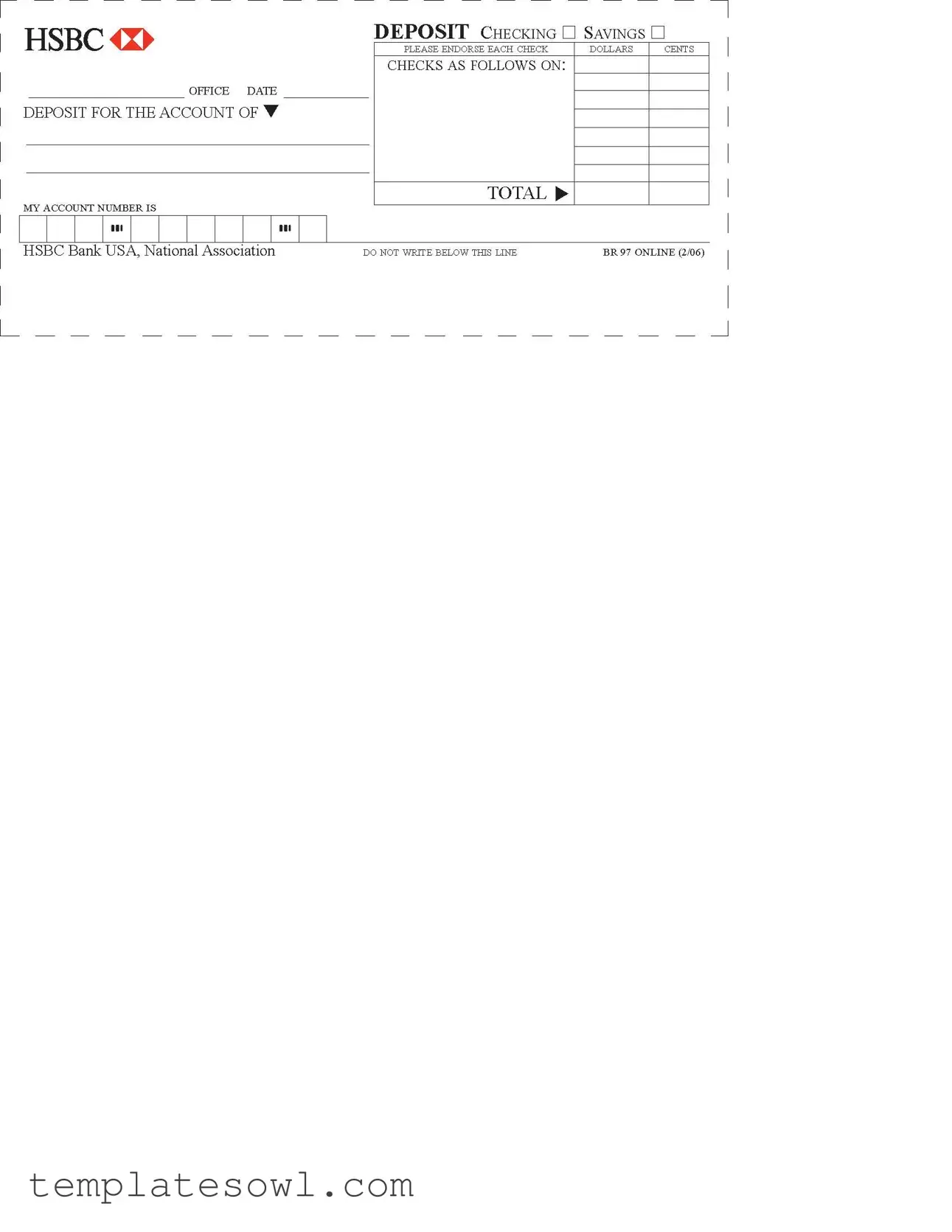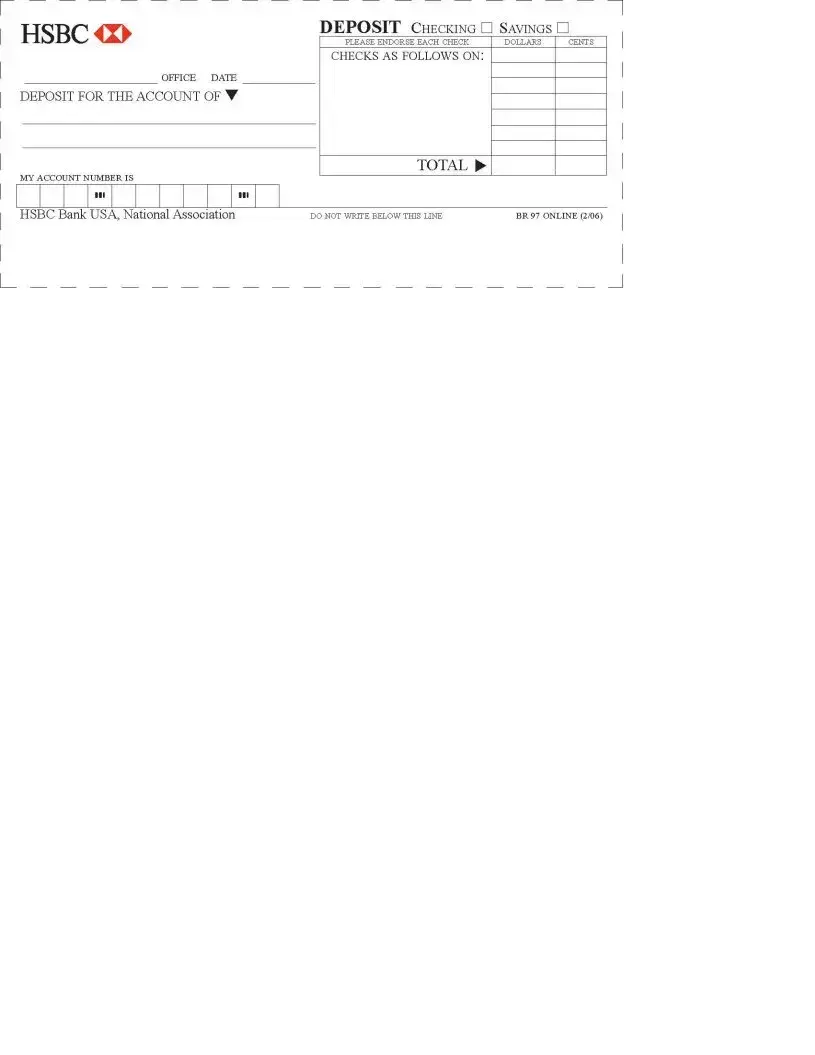Filling out a bank deposit slip may seem straightforward, but many individuals make common mistakes that can lead to delays or complications. One frequent error is failing to include all necessary information. If the account number is incorrect or not included, the bank may not be able to process the deposit correctly. Always double-check that the account number matches what’s on your banking documents.
Another common mistake is miscalculating the total amount being deposited. It is crucial to add up the deposits accurately. If there is a discrepancy between the amount written on the deposit slip and what is actually deposited, it can lead to confusion during processing. Take extra time to verify each amount and ensure the totals are correct.
Many people overlook the importance of endorsing checks. The slip instructs depositors to endorse each check, yet some forget this essential step. Without a proper signature on the back of each check, the bank might reject the deposit. This oversight can often delay access to funds, causing frustration for all parties involved.
Inattention to details can also lead to an incorrectly filled-out section for Dollars and Cents. When listing the amount of the deposit, it is important to separate dollars and cents clearly. Mixing these values up can result in incorrect processing and may require additional time to resolve.
People often fail to use the correct deposit type, whether it be for checking or savings. It is necessary to mark the appropriate box clearly. If the wrong option is selected, funds could be allocated incorrectly, affecting the account holder’s expectations and financial planning.
Not writing down the date of the deposit is another mistake. Completing the date section is critical for record-keeping and helps track transactions. Omitting this information creates unnecessary complications when reviewing banking statements in the future.
Many customers neglect to include details in the 'deposit for the account of' section. This section should clearly indicate whose account the deposit is intended for, especially in cases where accounts are joint or multiple accounts exist. Failing to provide clear identification can lead to financial errors.
Lastly, ignoring the instruction “DO NOT WRITE BELOW THIS LINE” is a common misstep. This area is reserved for bank use only, and any marks made in this section can interfere with the processing of the deposit. Always respect this guideline to ensure that the transaction goes smoothly.

